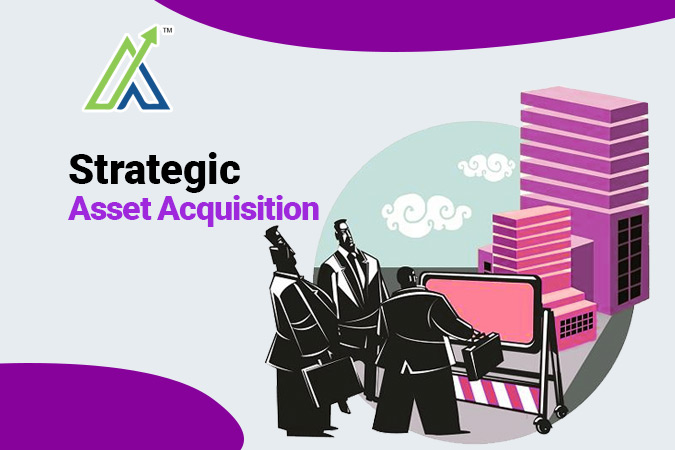In today’s cutthroat world, businesses have to seize every chance to grow fast. Strategic asset acquisition is the secret sauce. Companies use different tricks to get ahead, break into new markets, or solidify their ground. Let’s break down the strategies used for strategic asset acquisition in India.
Mergers and Acquisitions (M&A)
Mergers and acquisitions are all about companies or assets coming together. Firms do this to widen their market reach, snag new tech, or achieve economies of scale.
Example: In 2018, Walmart snapped up 77% of Flipkart for $16 billion, carving out a big slice of India’s booming e-commerce market.
Joint Ventures
Joint ventures, or JVs, happen when two or more parties join forces to launch a new business. They pool resources, share risks, and split profits. It’s a go-to move to enter new markets or industries.
Example: In 2007, Tata Motors and Fiat teamed up to form a JV to produce and sell Fiat cars in India. Tata brought local market expertise, while Fiat provided tech know-how.
Strategic Alliances
Strategic alliances are partnerships where companies leverage each other’s strengths without creating a new entity. These help firms access new markets, tech, or skills.
Example: Bharti Airtel and Google partnered to offer affordable smartphones in India, using Airtel’s telecom network and Google’s tech expertise.
Greenfield Investments
Greenfield investments involve setting up a new operation or facility from scratch in another country. This allows companies to fully control their operations and tailor them to their needs.
Example: In 2018, Samsung built a new plant in Noida, Uttar Pradesh, the world’s largest mobile factory, boosting production for the Indian market.
Brownfield Investments
Brownfield investments involve buying or leasing existing facilities to kickstart new production. This is often faster and less risky than greenfield investments because it uses existing infrastructure.
Example: In 2017, PepsiCo bought an existing snack factory in Maharashtra to expand its production and meet growing demand in India.
Public-Private Partnerships (PPPs)
Public-private partnerships are collaborations between government bodies and private companies for big projects, especially in infrastructure and public services.
Example: The Delhi Metro Rail Corporation (DMRC) is a successful PPP, with the government and private firms developing and running the metro network in Delhi.
Asset Swaps
Asset swaps involve exchanging assets between companies to meet strategic goals like entering new markets or optimizing portfolios.
Example: Reliance Industries swapped assets with BP to strengthen its position in the Indian energy sector, benefiting from each other’s expertise and resources.
Leveraged Buyouts (LBOs)
Leveraged buyouts involve acquiring a company using a lot of borrowed money. This lets firms make big acquisitions without using much of their own capital.
Example: In 2019, Blackstone acquired a majority stake in Essel Propack through an LBO, expanding in the packaging industry.
Franchising
Franchising allows companies to expand their brand and operations with minimal investment by licensing third parties to operate under their brand.
Example: McDonald’s has grown in India through franchising, letting local entrepreneurs run restaurants under the global fast-food brand.
Technology Licensing
Technology licensing grants rights to use tech to another company. This helps monetize intellectual property and speed up market entry.
Example: Bajaj Auto licensed its DTS-I tech to other manufacturers, allowing them to use advanced tech in their bikes while earning revenue for Bajaj.
Questions to Test Your Knowledge
Q: Which deal screams Joint Venture (JV) in India?
- Walmart gobbling 77% of Flipkart
- Tata Motors and Fiat teaming up to push cars
- Bharti Airtel and Google hooking up for cheap smartphones
- Samsung erecting a massive plant in Noida
Q: What’s the main advantage of Brownfield Investments over Greenfield Investments?
- Full control over operations
- Using existing infrastructure
- Bigger risk and cost
- Starting from scratch
Q: In 2018, who went all-in on a Greenfield Investment with the world’s largest mobile factory in Noida?
- Walmart
- Tata Motors
- Samsung
- PepsiCo
Q: Which strategy involves buying a company with a ton of borrowed money?
- Joint Venture
- Asset Swap
- Leveraged Buyout
- Technology Licensing
Q: Which example nails a Public-Private Partnership (PPP)?
- McDonald’s spreading through franchising
- Delhi Metro Rail Corporation’s big project
- Reliance Industries swapping assets with BP
- Blackstone grabbing a piece of Essel Propack
Conclusion
In India, strategic asset acquisition uses various methods, each with its own pros and cons. These strategies help companies break into new markets and grow, driving innovation and competitive advantage. Companies need to assess their goals and resources to pick the best approach, as shown by the successful examples. So, how will your company tackle strategic asset acquisition in India? The right move could redefine your market presence.

